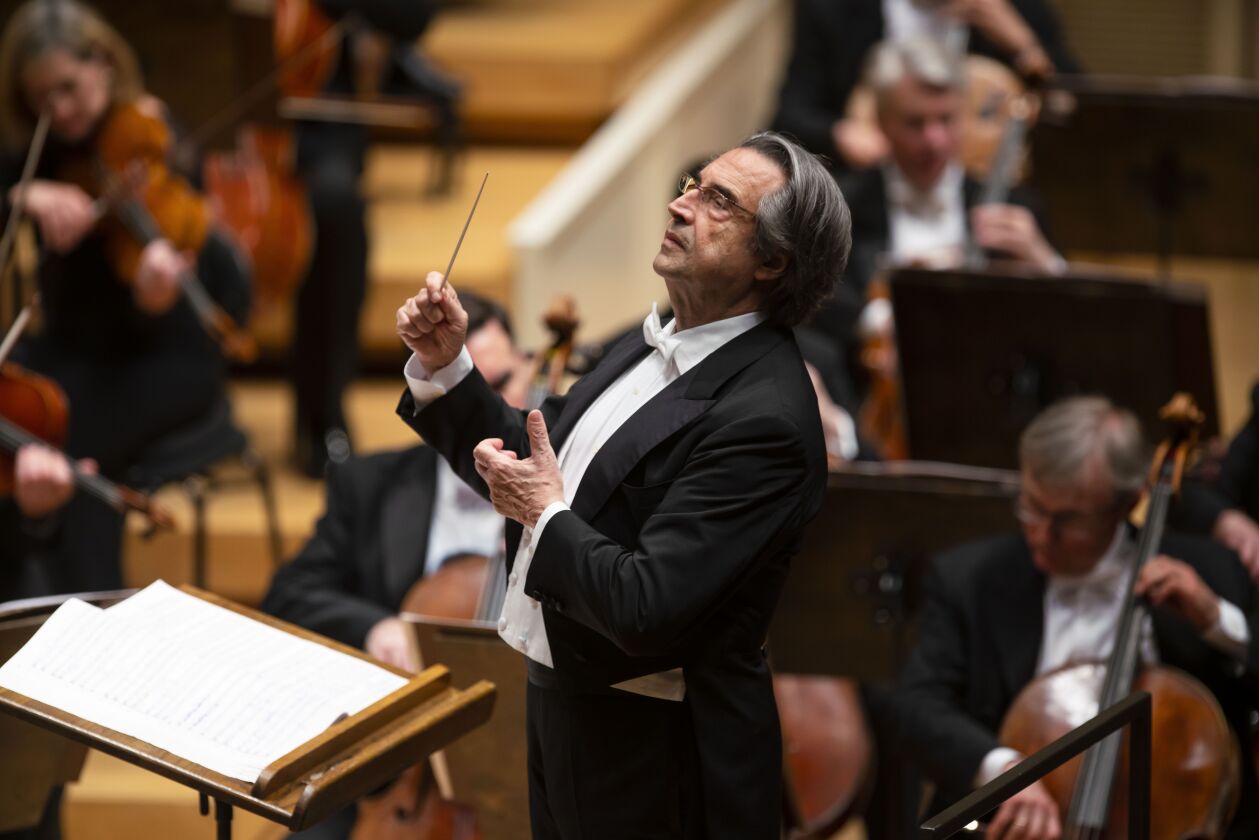While last week’s Chicago Symphony Orchestra’s concerts put an emphasis on less frequently heard repertoire, including a piece the ensemble had not performed in its entirety since 1894, Thursday evening’s program was all about the tried and true.
The line-up, which will be repeated Friday and Saturday, featured two masterworks each by a pair of constantly innovative composers who were at the top of their field during their lifetimes – Wolfgang Mozart and Igor Stravinsky.
Both were masters of musical storytelling, and three of the evening’s offerings were written for the theater, but it was the one non-theatrical work that arguably stood out over all else – Mozart’s extraordinary Piano Concerto No. 20 in D minor, K. 466.
Chicago Symphony Orchestra, Riccardo Muti, conductor Mitsuko Uchida, piano ★★★★ When: 8 p.m. May 10 – 11 Where: Orchestra Hall, 220 S. Michigan Tickets: $37-$253 Info: cso.org
The composer’s 23 concertos for piano and orchestra rank among his most treasured creations, and this dark, inward-looking example, Mozart’s first in a minor key and Beethoven’s favorite, is among the finest in the group.
Serving as soloist Thursday was Mitsuko Uchida, who is quite simply one of the great pianists of our time. While there are certainly other possible interpretations of this work, few if any could top the expressiveness and innately Mozartean feel of this one.
There is something transcendent and transporting about Uchida’s approach to this composer. She brought airiness, eloquence and clarity to her playing, and nothing was overthought or overdone. Indeed, she found a great deal of depth in seeming simplicity.
Perhaps most important, she infused every moment with a sense of immediacy that came in part from her constantly listening and generating a genuine dialogue with the orchestra, smartly and seamlessly passing melodic lines back and forth.
Uchida seized on the unsettled, uneasy feel of the first movement and brought a wonderful delicacy and faraway quality to the serene slow movement, drawing handsome, amber colors from the piano. She chose the famous cadenzas Beethoven wrote for this work (Mozart’s are lost) and performed these well-known additions with uncommon drama, freshness and even a sense of surprise.
With her all the way was Muti, who sensitively responded to Uchida’s every nuanced gesture and turn. This was two septuagenarians, two masters with a long history with this composer, and they had no trouble understanding and partnering with other.
Providing an ideal prelude to the concerto was Mozart’s unfailingly appealing Overture to “The Marriage of Figaro,” K. 492, with Muti and the orchestra offering a jaunty, buoyant take with snappy articulations and well-delineated dynamics.
The second half was devoted to suites from two of Stravinsky’s famed ballets, starting with the Divertimento, Suite from “The Fairy’s Kiss,” which was assembled six years after the original work’s 1928 premiere. Although there are some echoes of the rhythmic electricity of “The Rite of Spring” from 15 years earlier, this is a more backward-looking work that draws on some 14 songs and piano miniatures of Tchaikovsky.
Muti and the orchestra effectively conveyed the sweep and evocativeness of this music, which showcases every section of the orchestra, especially the brass, and offers an unusually large role for the growly bass clarinet played admirably by J. Lawrie Bloom.
A particular high point is the Pas de deux movement which opens with a tender combination of clarinet, harp and solo cello (principal cellist John Sharp at his affecting best) and proceeds into a beautiful outpouring of Tchaikovsky-like romanticism before concluding with a lively coda.
It was a hardly a surprise that Muti chose to conclude the evening with the five-movement Suite from “The Firebird” (the 1919 version), a work that offers a bewitching concoction of fieriness, romance and exoticism and powerfully showcases the full glories of this orchestra.
Diaghilev’s Ballets Russes debuted this landmark ballet in 1910, and it immediately catapulted the then-unknown Stravinsky to stardom with its rhythmic zest, propulsive energy and rich, inventive orchestration.
There were highlights aplenty from Muti and the orchestra from their thrillingly brash, driving, even menacing version of the “Infernal Dance” to the slow, shimmering “Berceuse” with its spellbinding solo by principal bassoonist Keith Buncke. Also deserving mention were the compelling solos and first-rate playing throughout by guest principal hornist David Cooper from the Dallas Symphony Orchestra.
Kyle MacMillan is a local freelance writer.






